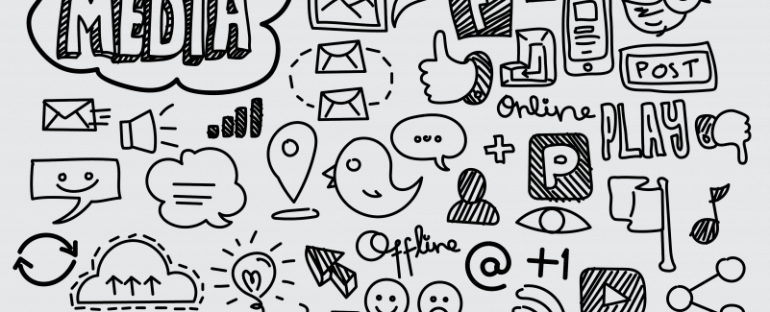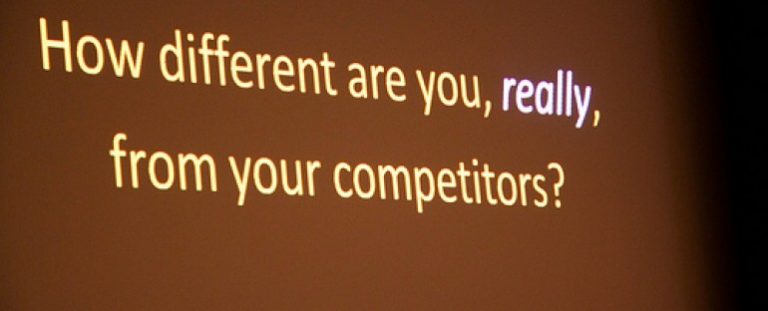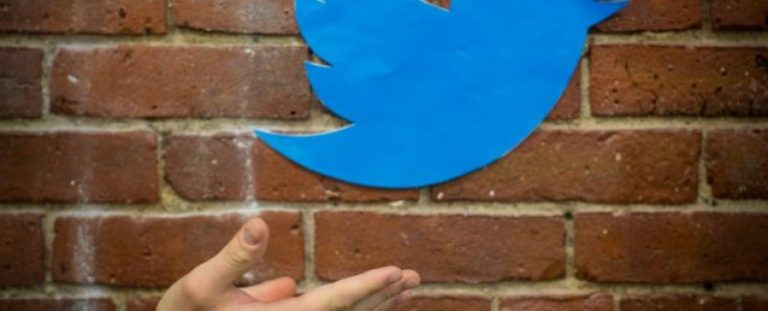Comparing Analytics
You’ve done all the right things: you’ve examined the best platform options for your business; you’ve started only as many social media accounts as you can consistently manage; you’ve created a social media marketing strategy; and you’re posting and engaging consistently.
Now, you’re ready to take a closer look at your analytics. Good for you! If you feel like you’re staring at a bunch of numbers that don’t mean much of anything to you, don’t despair. Let’s have a look at which numbers are significant, and what sort of numbers you should be aiming for.
First, a note on getting started. Initially when you start your social media marketing efforts, you will likely see a steep incline of activity (likely at a growth rate of 15-20%), but then you’ll hit a plateau when your activities and your tactics are starting to balance out, and you should settle in at a growth rate of 5-10% per month. Think of it as going from standing silently in the corner at a networking event to becoming the social butterfly – you are going from limited activity to lots of activity on your social accounts so your sharp incline will coincide with your sharp incline of activity.
Growth in Followers: the increase or decrease of social media accounts that follow you on a specific social media platform. You should always see your number of followers on any platform increasing, indicating an increase in your reach. If you are seeing a decrease you need to immediately assess your posts to analyze the reason your followers are leaving you.
Don’t always be concerned with the actual number of followers on any given platform. At the beginning, pay closer attention to your rate of growth. Twenty followers may not seem like a lot, but when you are starting at 100, that is a good rate of growth. You should see a 5-15% increase in followers from one month to the next.
However, a 5-15% increase looks a lot different as your following increases, especially into the thousands. Consistently hitting a 5-15% increase when you already have thousands of followers may be challenging. Consider what your average increase is and how many new followers you are attracting. For example, 100 new followers per month is still a good number when you have 1500 followers.
Lastly, when considering growth in followers, you want to consider quality over quantity. It is possible to gain 1000 followers on Fiverr.com but the quality of these followers is going to be VERY low. They are not your target audience and are often dud accounts who will unfollow you just as fast as they followed you. Therefore, take a look at WHO is following you and consider whether they are your target audience, influential in your industry and/or a brand advocate for you.
Engagement Rate: Engagement is the most important measure of your social media analytics. It demonstrates that your followers are interacting with your posts and profile. It also shows that you are building a dedicated, engaged social community.
Engagement is made up of a number of elements of social interactions on each platform including:
- Twitter: favourites (likes), replies, mentions, retweets, reach, clicks
- LinkedIn: likes, comments, shares, mentions, reach, clicks
- Facebook: likes, comments, shares, mentions, reach, clicks
Your engagement rate is a formula that a platform uses to qualify your engagement efforts based on the above metrics and other factors, such as the size of your following and the number of posts you make in a given period. Each platform has its own unique algorithm that changes as the platform makes updates.
Ideally, you want to see a 1-5% percent increase in your engagement rates from month to month. You always want to see a positive number, but remember that you also need to look at the anomalies in activity. These numbers will go up and down. When they are very high, it reflects that you have posted an especially popular post (maybe it even went viral!) following a month when nothing significant like this happened. However this can work both ways. If you post something especially successful one month, you may see your engagement rate decrease the following month if there is no such noteworthy post.
NOTE: Sometimes reporting of engagement is based on percentage of engagement, not the increase – here you’re looking for 1-5% at least.
Impressions: Impressions are a metric that is often overlooked. However, it is important to track because it means someone saw your post or ad. Every time someone sees your post or ad, whether through a newsfeed, someone engaging with your post or a paid ad, it counts as an impression.
The important thing to keep in mind when it comes to impressions is the correlation to your engagement level. When you have an increase in impressions, you should also have an increase in engagement. If you have a high number of impressions, but low engagement, you need to consider why people aren’t finding the posts interesting enough to engage with them.
When you look at your impressions from month to month, you want to see them increasing by 5-10% each month. However you also need to keep the platform’s algorithm updates in mind. A prime example is Facebook, where everyone’s reach is going down because of the algorithm updates. A couple years ago you could easily get 20% in your impressions, but now you can expect 1-5%. This is where pay to play is coming into action. If you see your reach and impressions going down, keep in mind how the algorithm has changed — have there been any updates to the platform? If you are consistently seeing a decrease in your impressions, you want to change your content strategy because it is not connecting with your followers.
Reach: It is very important to analyze the reach of a post, because it directly shows whether you are successfully engaging with your following. When your post engages more followers, the reach increases.
On most platforms, you can have organic and paid reach. Organic reach is the total number of unique people who saw your post through engagement with your social community. Paid reach is the total number of unique people who saw your post as a result of a paid ad you set up through the social media platform. Most social platforms have the ability for you to purchase ads (or boost a post), which will increase your post’s, profile’s, and business’ exposure.
As with engagement rates, you want to look at the anomalies here and how they relate to any particularly popular posts, or any events or contests that would have impacted your reach at a specific time.
Clicks: When someone clicks on your post, it shows that your post resonated with him or her. It was enticing enough to make them want to click on your link or visit your website. If you find that your posts with links are rarely getting clicked on, you may want to consider revising your post messaging, and also evaluate the posting time or format. Alternatively, if you have a high number of people clicking on your link, but not staying on your site very long, you may want to review the messaging on your website, and evaluate whether it matches what you are communicating through social media.
The intention of links on social media is to bring someone to your website, and keep them there so they convert as a customer. When evaluating this metric, consider the entire process the customer goes through from social media to the website to the “Buy Now” button. Any hiccup along the way needs to be addressed to ensure the person converts on the website.
First and foremost before you look at this number, consider whether you actually have clickable content. If you’re on Facebook and you use images heavily without a link, this will give you a skewed click number. On Twitter, where everything is click-heavy, you want to see that number increasing, at least 5-10% per month.
A quick note on the 5-10% target I have mentioned several times: some people may argue that this number is low; however I am less concerned with the percentage of increase and more concerned that you are seeing steady, consistent growth. Large spikes mean nothing if they are not a sustainable rate of growth. Slow and steady growth over time will only add to itself, leading to larger gains in the future. Don’t get discouraged — if your social media growth is steady, you’re doing well.
Final Thoughts
Think of your social media marketing like a dial: the more activity and engagement you apply, the higher the engagement numbers you can expect to see. As you gain more followers, however, these numbers will slowly decline. For example: on Twitter, if you have a following of 200 and you take a lot of time to post, retweet and engage with others, you may very well see a 50% increase in engagement or followers thanks to this burst of activity. If you have 10,000 followers, on the other hand, a 5% increase would be respectable.
If you have questions about your social media marketing or still feel unsure about your analytics, get in touch! I would love to sit down with you and discuss ways to improve your numbers, analyze your numbers for you or create a full social media marketing plan.








